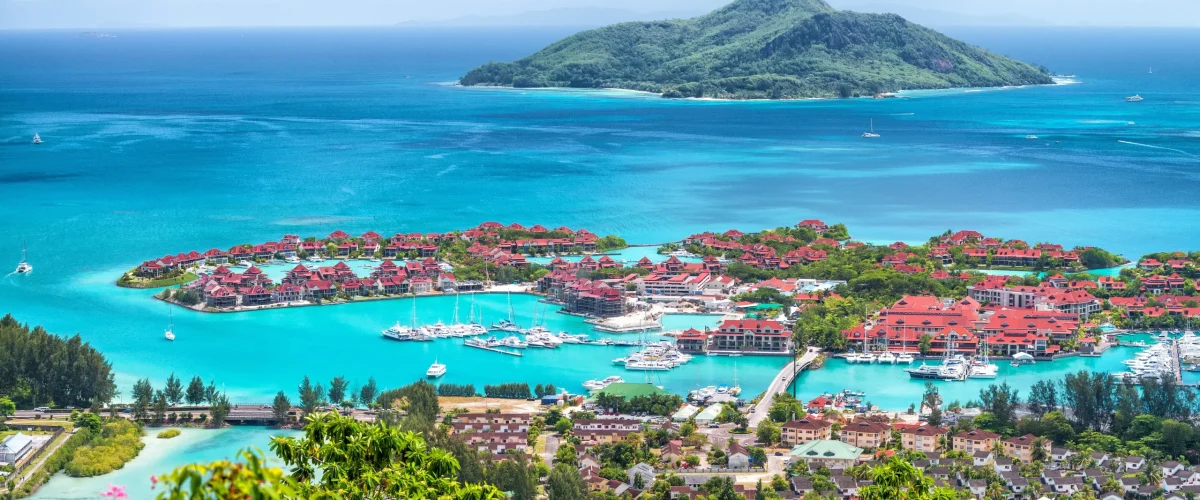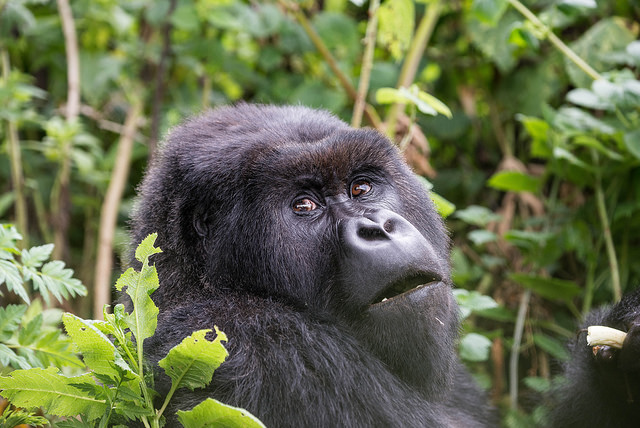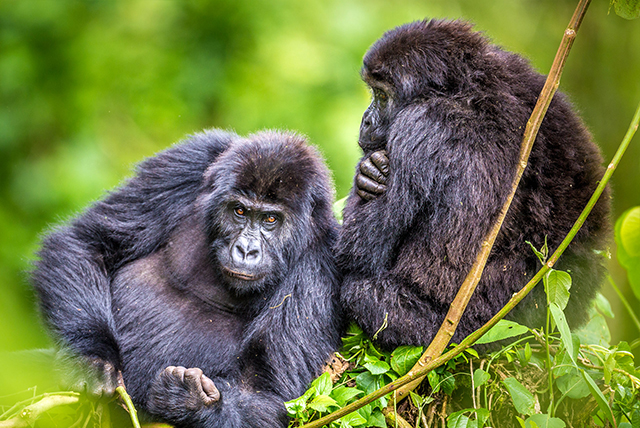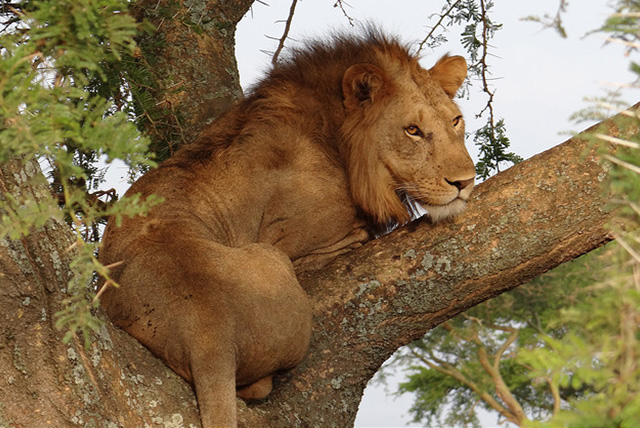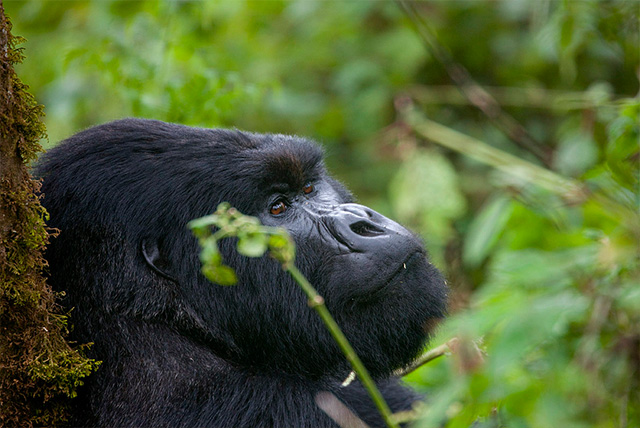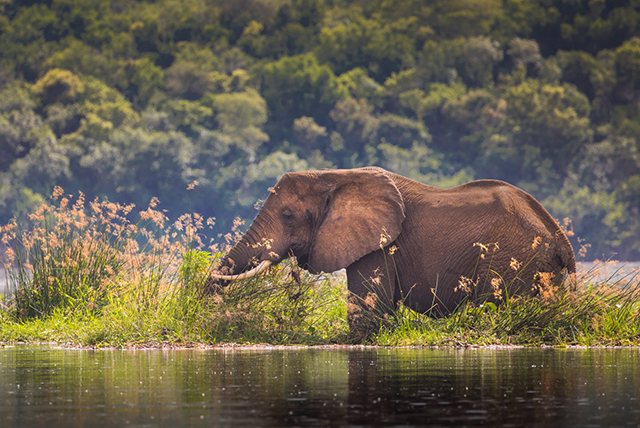Madagascar National Parks and Reserves
Top Madagascar Safari Spots
Amber Mountain National Park is a place brimming with excitement and exploration.
Amber Mountain National Park, or Parc National Montagne d’Ambre, is a captivating wilderness area in northern Madagascar, celebrated for its vibrant montane rainforest and remarkable volcanic landscapes.
The park spans an impressive 18,200 hectares and is home to a stunning array of volcanic mountains that soar to 1,475 meters / 4,839 feet, providing visitors with breathtaking vistas and an abundance of wildlife. Well-marked paths guide you to breathtaking waterfalls, stunning crater lakes, and revered caves, ensuring that the park welcomes a diverse array of explorers, including those with disabilities.
Amber Mountain boasts an array of unique wildlife, featuring lemurs, rare birds, and the tiniest chameleons on the planet. The park is a treasure trove of life, showcasing an incredible variety of 75 bird species, 25 mammal species, 34 amphibian species, and 59 reptile species, inviting exploration and discovery at every turn.
The stunning landscapes and rich variety of ecosystems, along with its closeness to the beach paradise of Nosy Be, make Amber Mountain National Park an essential stop on any journey through Madagascar.
Best National Parks in Madagascar
Madagascar boasts 50 protected areas. Here are some of the most incredible national parks that Madagascar presents.
Masoala National Park
Masoala National Park, situated on the Masoala Peninsula, stands as Madagascar’s largest protected area, covering 230,000 hectares of untouched rainforest and vibrant marine ecosystems.
This secluded and pristine area is a treasure trove of life, home to countless species that exist nowhere else in the world. Visitors can meet an exciting array of wildlife, featuring lemurs, chameleons, colorful birds, and unique species like the green lizard, red owl, tomato frog, and serpent eagle.
Reaching Masoala requires a two-hour boat journey from Maroantsetra, where you will discover remarkable trekking and hiking paths winding through its verdant rainforest, alongside thrilling sea kayaking and snorkeling experiences in the lively marine reserve.
From July to September, the Bay of Antongil transforms into an exceptional location for witnessing the majestic giant humpback whales. The journey starts with a stroll through the lush primary forest, where you can dive into refreshing rivers and relax with a barbecue at a sustainable lodge.
Masoala is a nature paradise, perfect for those seeking an exhilarating experience away from the usual paths.
Ranomafana National Park
Ranomafana National Park, or Parc National de Ranomafana, covers 40,000 hectares of vibrant wilderness in Madagascar, rising from 800 to 1,200 meters above sea level.
Designated as a UNESCO World Heritage Site in 2007, this region boasts incredible biodiversity, hosting 12 species of lemurs, among them the critically endangered golden bamboo lemur. The park’s lush rainforest, woven together by the flowing Namorona River and its tributaries, bursts with life, showcasing everything from vibrant chameleons to the extraordinary giraffe-necked weevil.
Adventurers can select from a variety of guided hikes, from leisurely two-hour strolls to exhilarating overnight camping excursions. The park’s hilly terrain presents exhilarating views into the forest canopy, where you can encounter lemurs such as the red-bellied, red-fronted brown, and greater bamboo lemurs. Night hikes offer an incredible chance to encounter chameleons and frogs.
The park’s main road leads to a breathtaking waterfall, a true gem of the region.
Andasibe National Park is a place brimming with excitement and exploration.
Andasibe National Park, a top destination in Madagascar, is a paradise for wildlife lovers, providing an opportunity to encounter some of the island’s rare and endangered species.
Situated in the eastern part of Madagascar, the park boasts a diverse array of lemur species, featuring the elusive nocturnal lemurs, the impressive Indri lemurs—the largest among all lemur species—alongside brown lemurs and bamboo lemurs. The park is alive with a lively assortment of birds, striking chameleons, and other extraordinary wildlife.
Andasibe-Mantadia National Park consists of two distinct regions: Analamazaotra (commonly referred to as Andasibe or Périnet) and Mantadia. Analamazaotra is renowned for its vibrant community of Indri lemurs, whose eerie calls echo throughout the forest. Mantadia, situated 20 km to the north, invites visitors to delve into the untouched primary rainforest, where majestic trees and vibrant orchids (from October to December) await discovery.
Visitors can embark on guided night walks to discover chameleons, frogs, and mouse lemurs in their wild surroundings.
Bemaraha National Park
Bemaraha National Park, or Parc National des Tsingy de Bemaraha, is a UNESCO World Heritage Site renowned for its stunning limestone formations, the Grand Tsingy and Petit Tsingy, that beckon explorers and thrill-seekers alike.
These stone forests, with their intricate maze of jagged peaks, evoke the image of grey cities when seen from above. The park’s unique landscape invites exploration through a network of walkways, ladders, and suspension bridges, providing visitors with stunning views from carefully chosen vantage points. Bemaraha boasts the largest uninterrupted tsingy on the planet and presents a variety of hiking circuits that cater to all levels of adventurers, from easy strolls to exhilarating challenges.
The park teems with wildlife, showcasing 13 species of lemurs, with Decken’s sifaka standing out as a remarkable feature. Visitors might encounter bat colonies, the rare western red forest rat, and occasionally predators such as the ring-tailed mongoose or the elusive fossa.
The park’s hiking trails can be reached by boat through the Manambolo River Gorge, enhancing the thrill of discovering this remarkable natural wonder.
Ankarana Special Reserve
Ankarana Special Reserve in northern Madagascar is a geological wonder, showcasing a 150-million-year-old limestone plateau that has transformed into striking karst pinnacles known as tsingy.
The reserve is famous for its breathtaking landscapes, featuring an extensive system of underground rivers stretching over 100 km / 62 miles—recognized as the largest in Africa—alongside profound canyons and mysterious caves.
Ankarana boasts a vibrant array of wildlife, featuring numerous lemur species like Sanford’s brown lemur and crowned lemur, along with the elusive fossa and ring-tailed mongoose. The reserve is home to an exciting array of reptiles, featuring the vibrant panther chameleon, the striking giant day gecko, and the cleverly disguised leaf-tailed gecko.
The Ankarana Massif, safeguarded within the park, showcases breathtaking landscapes, where boardwalks, bridges, and viewing platforms invite exploration and deliver awe-inspiring vistas of this extraordinary natural marvel.
Ifotaka Community Forest Reserve is a place brimming with excitement and exploration.
The Ifotaka Community Forest Reserve, nestled in the Mandrare Valley of southern Madagascar, showcases a captivating mix of gallery forest and dry spiny forest, both of which are rich in cultural importance for the local Antandroy people.
Visitors to the reserve embark on a journey led by the Antandroy through these sacred forests, providing an enriching experience that intertwines the wonders of nature with the richness of culture. The all-inclusive Mandrare River Camp, a traditional tented bush camp, offers cozy lodging paired with outstanding service and delicious meals.
The reserve offers an exciting opportunity for observing lemurs, featuring large groups of ring-tailed lemurs that call the tamarind gallery forest home, alongside Verreaux’s sifaka residing in both the gallery and spiny forests. Evening strolls uncover fascinating creatures such as the white-footed sportive lemur and grey mouse lemur.
The camp, nestled in a picturesque tamarind forest by the Mandrare River, boasts breathtaking sunset vistas and proximity to enchanting baobab clusters, where vibrant traditional dances come to life.
Isalo National Park
Isalo National Park, or Parc National de l’Isalo, is famous for its stunning sandstone formations that soar dramatically from dry grassy plains, crafting a captivating landscape ideal for photography.
Situated in southern Madagascar, the park beckons to hikers with its diverse trails, designed to satisfy a range of interests and abilities.
Although Isalo may not be the premier destination for wildlife enthusiasts, it boasts a variety of lemur species, including the charming ring-tailed lemur and the Verreaux’s sifaka, celebrated for its distinctive, dance-like movements across the terrain. These lemurs are frequently spotted in the park’s breathtaking canyons, like Maki Canyon and Rat Canyon. Bird-watchers will find excitement in discovering some of the region’s unique dry-country specialties.
The park’s most iconic feature, ‘la fenêtre de l’Isalo’, the Isalo window, presents a breathtaking view of the setting sun framed by eroded rocks, making it an essential stop for adventurers.
Akanin’ny Nofy
Akanin’ny Nofy, or Palmarium Park, is a private reserve situated on Madagascar’s east coast by the Pangalanes Canal, tucked between Lake Ampitabe and the Indian Ocean.
This small reserve, spanning only 0.5 square km / 0.2 square miles, is a captivating haven of Madagascar’s unique plants and animals. Visitors can embark on an exciting journey through a vibrant collection of plants, featuring unique palm trees, stunning orchids, and majestic mahogany, alongside an array of fascinating reptiles. The Palmarium is renowned for its vibrant lemur population, featuring approximately a dozen species that have made this area their home. These lemurs roam freely and are accustomed to human presence, offering incredible photo opportunities, particularly during feeding times when species such as the black-and-white ruffed lemur come to the lodge.
The reserve provides both guided and unguided walks, creating an effortless and inviting opportunity to encounter these captivating animals up close. A standout moment is the evening journey to a nearby island to seek out the elusive aye-aye.
Madagascar’s Wonders & Destinations
Nosy Be, Madagascar Island Escape
Nosy Be, often referred to as Nosy Manitra or “The Scented Island,” stands as Madagascar’s largest offshore island, situated a mere 15 km from the mainland. Situated in the remote northern region of Madagascar, this tropical haven, embellished with swaying palm trees and colorful bougainvilleas, features pristine beaches and abundant marine life, establishing it as an ideal spot for snorkeling, diving, and kayaking. Explorers can encounter vibrant corals, a variety of fish species, majestic whales, playful dolphins, gentle whale sharks, and graceful turtles in its crystal-clear waters. Beyond the beach, you can hike Mont Passot or Mount Lokone for breathtaking coastal views, visit the Ylang Ylang distillery, or explore the Lokobie Reserve to encounter unique wildlife like the Nosy Be Panther Chameleon. Nosy Be presents a vibrant tapestry of cultural experiences, from exploring the lively Hell-Ville market to savoring local spices and engaging with welcoming locals. The island serves as a portal to enchanting islets such as Nosy Komba, Nosy Tanikely, and Nosy Sakatia, each brimming with distinctive attractions and thrilling activities.
St. Marie Island, a true haven of excitement
Situated off the northeastern coast of Madagascar, the island of St. Marie, or Nosy Boraha, is a breathtaking haven celebrated for its untouched beaches, vibrant coral reefs, and verdant scenery. This holiday destination offers thrilling opportunities for whale-watching, particularly from July to September, when you can embark on boat trips with researchers to witness these magnificent beings in their natural habitat. St. Marie presents a variety of exhilarating activities, from snorkelling and scuba diving in its vibrant lagoon to uncovering the mysteries of the pirates’ cemetery, wandering through fragrant cashew and cinnamon groves, or unwinding on its pristine white sandy beaches. The Ifaty coast, Tuléar, baobabs, spiny forest, and chameleons await exploration.
Situated approximately 27 km from Tuléar, the Ifaty coast presents a distinctive combination of stunning landscapes and rich cultural encounters. Protected by a vast coral reef, Ifaty offers the perfect setting for snorkelling and scuba diving, teeming with lively marine life waiting to be discovered. The region is renowned for its seasonal whale watching, where magnificent whales give birth just off the coast from July to September. The terrain is alive with rugged forests and lush mangroves, where vibrant Vezo fishing villages dot the coastline. In this enchanting locale, you can immerse yourself in the traditional lifestyle of the Vezo fishermen while delighting in the thrill of birdwatching amidst the tranquil, untouched surroundings.
Reniala Park, a remarkable realm of exploration
Reniala Forest, a 45-hectare community-managed nature reserve, is a remarkable habitat that showcases Madagascar’s iconic baobab trees, spiny bushes, and rare reptiles such as geckos and chameleons. This small protected area is home to over 2,000 plant species, with 95% being unique to the region, including the fascinating octopus trees. Visitors can embark on a journey through the forest’s botanical trail, marvel at ancient baobabs, and seek out rare birds such as the red-capped coua and blue vanga. Reniala Forest unveils a captivating glimpse into one of the planet’s most extraordinary ecosystems.
Fianarantsoa, a vibrant center of culture and a region known for its wine production
Fianarantsoa, translating to “the city where one can learn good things,” is a vibrant cultural and religious center established as a royal city in the early 19th century. Now the capital of the Haute Matsiatra Region, it serves as a hub for learning and the art of winemaking. Fianarantsoa stands as the entry point to Isalo National Park and Ranomafana National Park, and is inhabited by the Betsileo tribes, establishing it as a vital stop for adventurers delving into Madagascar’s vibrant culture and stunning scenery.
Ambalavao, a place of creativity and craftsmanship
Ambalavao, celebrated for its wine production, presents a distinctive insight into Madagascar’s traditional wine-growing sector, even with its challenging climate for viticulture. The region’s rich history of wine-making began with the dedicated work of priests and monks. Ambalavao is renowned for its “Papier Antemoro,” a unique papyrus-like paper embellished with dried flowers. A trip to the Anteimoro Paper Factory offers a glimpse into this distinctive craft, along with a chance to acquire a piece as a memorable souvenir.
Ihosy, the vibrant heart of the Bara tribe
Ihosy serves as the vibrant heart of the Bara tribe, renowned for their role as the guardians of Zebu cattle. This town serves as a gateway between Madagascar’s arid southern landscapes and the vibrant highlands, tucked away close to the majestic Andringitra mountain range. The area boasts remarkable landmarks, such as the “3 hillocks” and the striking “Archbishop’s Cape,” which contribute to the region’s exceptional scenery.
